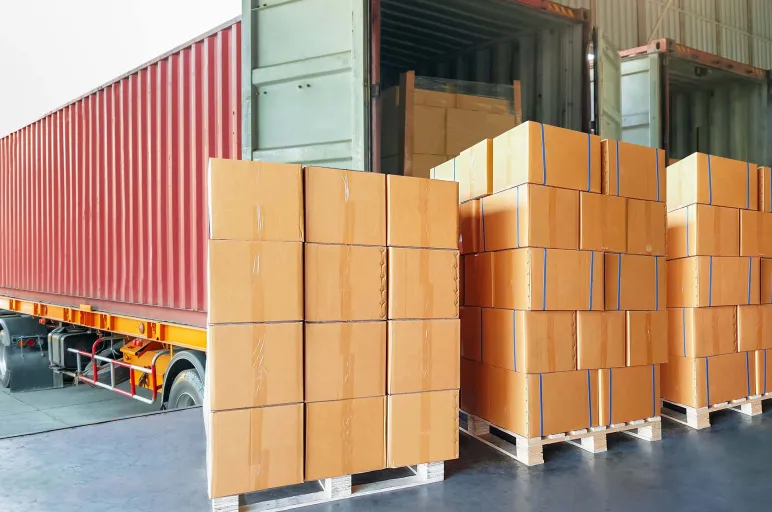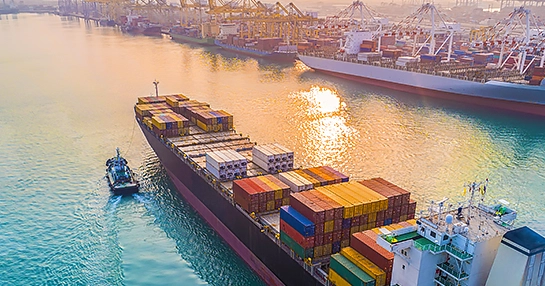-
GEP Software
-
- Procurement Software
- Direct Procurement Software
- Indirect Procurement Software
- Unified Source-to-Pay
- Source-To-Contract Software
- Procure-to-Pay
- Midsize & High Growth Enterprises
- Key Capabilities
- Spend Analysis
- Sourcing
- Contract Lifecycle Management
- Supplier Lifecycle Management
- Third-Party Risk Management
- Purchasing
- Payments
- Data Analytics and Reporting
- Do more with GEP SMART
- Intake Management & Orchestration
- Intelligent Category Management
- Tail Spend Management
- Cost Data & Analytics (GEP COSTDRIVERS)
- AI-First Supply Chain Management
- Supply Chain Visibility and Execution
- Logistics Visibility
- Inventory and Warehouse Management
- GEP Multienterprise Collaboration Network
- Supply Chain Control Tower
- Field Services
- Supply Chain Collaboration & Planning
- Supply Chain Planning
- Purchase Order Collaboration
- Forecast Collaboration
- Capacity Collaboration
- Quality Management Software
- Should-Cost Modeling
- Direct Material Sourcing
-
-
GEP Strategy
-
GEP Strategy
Unrivaled supply chain and procurement expertise + the transformative power of AI
Supply Chain Consulting
- Environmental, Social and Governance
- Sustainability Consulting Services
- Socially Responsible Sourcing
- Scope 3
- Demand and Supply Chain Planning
- Collaborative Planning
- Source To Contract
- Procure To Pay
- Inventory Strategy & Management
- Operations & Manufacturing Excellence
- GEP Total Inventory Management Solution
- Network Strategy & Optimization
- Warehousing & Transportation Management
-
-
GEP Managed Services
-
GEP Managed Services
World-class skills, experience and know-how — amplified by the power of AI
-

Think Beyond Globalization, Choose Nearshoring as a Strategic Hedge Against Trade Uncertainty
- The traditional approach of production in faraway places poses many risks for businesses amid rising uncertainty.
- By shifting production closer to home, nearshoring helps balance the cost advantage with greater control.
- To succeed in nearshoring, companies need to invest in local ecosystems and build a local supply base.
September 26, 2025 | Supply Chain 5 minutes read
The Evolving Global Trade Landscape
Global trade is in the midst of an unstable era of rising tariffs, geopolitical tensions, and supply chain disruptions. What began as intermittent protectionism has escalated into a full-fledged reorganization of global supply chains.
In 2025, tsunami waves of tariffs from the U.S., China, and others have disrupted business as usual, with almost 48% of supply chain leaders pointing to tariff uncertainty as their biggest fear. As the U.S.–China trade war intensifies, companies have discovered that an over-extended, one-country model for sourcing can crumble upon sudden restriction. This uncertain climate is forcing a strategic shift away from the previous globalization playbook.
Still Relying on One Country Sourcing Strategy?
Learn why your business needs to source and produce closer to home
Why Nearshoring Now?
Nearshoring – relocating manufacturing or sourcing to proximate countries – offers a solution for multinationals to balance cost advantage with greater control. Below are the key drivers of nearshoring:
• Geopolitical risk mitigation
Erratic tariffs and trade barriers have made dependence on a single country risky. Shifting production near home diversifies the risk and avoids sudden trade shocks. As compared to total domestic reshoring, nearshoring saves some cost advantage with the added bonus of less vulnerability to volatile foreign policies.
• Supply chain resilience
The COVID-19 pandemic starkly exposed how vulnerable far-flung supply chains can be. Nearshoring improves agility and reliability by shortening supply lines that are prone to disruption. Companies can respond faster to crises when critical suppliers are a country or two away, rather than an ocean away.
• Cost and speed to market
Production near end-markets reduces lead times and transport costs. Procuring in Europe or North America, for example, might bring delivery times down to days from weeks, reducing transit costs and eliminating the need for expensive air freight. Being close to production hubs enables firms to react quickly to demand shifts and differentiate products to suit local tastes.
• Politically aligned partnerships
Companies are also "friend-shoring" by partnering with businesses located in nations with stable trade relations and values. They prefer to partner with politically aligned, regional countries to achieve more predictable business environments. For instance, free trade agreements like USMCA give Mexico a predictable set of circumstances with the U.S., and the EU's relationship with regional neighbors (e.g., free trade agreements with Morocco) instills the same degree of predictability into nearby supply chains.
Hard-hitting case studies from geographies and industries showcase the nearshoring tailwind
• Tech production diversifies to India
Apple is reducing its reliance on China with a "China+1" strategy. The company will produce 25% of its iPhones in India by 2026, a move tipping the scale to mitigate U.S.–China trade tensions. Apple is collaborating with Foxconn to expand new assembly lines in India, leveraging Indian incentives for local production. This diversification is not just about cost – it's geopolitical risk hedging and supply chain resiliency assurance for a critical product line.
• Mexico's growth in manufacturing
Nearshoring has prompted Mexico to be the United States' number one trading partner. U.S.–Mexico trade in goods has set new records, with over 80% of Mexico's exports now destined for the U.S. Global manufacturers are investing big: BMW and Volvo are ramping up electric vehicle production at their Mexican plants, drawn by proximity and the predictability of the USMCA trade deal. Industry experts estimate that regionalization of the supply chain can increase new exports by up to $35 billion annually for Mexico – a structural shift that speaks to Mexico's role as a nearshoring leader.
• Europe looks to near-shore partners
European businesses are also re-shoring their supply bases closer to home. Foreign direct investment in manufacturing hubs in Eastern Europe and North Africa has jumped over 60% since pre-pandemic times, as companies seek to avoid distant supply risks. Turkey, Hungary, Poland – and in the EU's "southern neighborhood" of Morocco and Egypt – are attracting new factories to replace Asia. One recent example is a French automaker investing €400 million in Turkey to increase production as an EU export base, and China's electric vehicle maker BYD is constructing its first European factory in Hungary. North African countries provide similar benefits: Morocco and Egypt offer low expenses, educated labor, and access to EU markets, making them natural nearshoring locations for automotive and textile industries.
5 Ways AI Can Be Your Strategic Ally Against Tariff Turbulence
Learn how AI can be your best defense against tariff volatility
What can businesses do to benefit from nearshoring and mitigate risks?
Organizations need to adopt a structured methodology which includes:
• Balancing global efficiency with regional resilience
Nearshoring is not anti-globalization – but complementary to it. Companies ought to complement regional "+1" sites with traditional offshore centers. For example, many electronics manufacturers now have factories in China and a nearer country like India or Mexico (a departure from sole reliance on China). This dual footprint maintains cost advantages while providing cover against strife in one single region.
• Choosing partners strategically
Evaluate possible near-shore locations for political stability, free-trade arrangements, human resources, and infrastructure. Favor countries that offer a predictable business environment through good trade arrangements and government regulation. Mexico's USMCA regime and manufacturing base, for instance, provide certainty for U.S. firms, whereas Morocco's solid ties and EU-free-trade status attract European enterprises. Synchronization of supply chains with such "friendly" economies reduces the risk of surprise regulatory shocks.
• Investing in local ecosystems
Relocating a factory is just one aspect of nearshoring; it is also building the local supply base. Companies have to invest in supplier development, employee training, and logistics infrastructure in the host country if they are to maintain quality and efficiency. Close local alliances and knowledge transfer enable companies to maximize the benefits of nearshoring without compromising cost savings. The upfront effort also creates goodwill and smoother operations in the host market.
• Remaining agile and continuing to monitor trade-offs
Nearshoring may be more costly in terms of inputs or labor than conventional offshoring, so consistently optimize. Use data and scenario planning to control production across locations as conditions shift. If tariffs, exchange rates, or demand patterns shift, be willing to change the sourcing strategy. Flexibility to shift suppliers or grow alternate sites is at the core of the nearshoring approach – that the supply chain is strong and low-cost in the long term.
Ready for Nearshoring?
Nearshoring has progressed from a defensive tool in an uncertain age to an advanced strategic move for multinational corporations. It offers practical insurance against trade chaos and supply disruption without sacrificing the gains of globalization.
The real-world pivots of technology titans, automaker OEMs, and others show that a more regionalized approach can make them more resilient without losing their global strengths. Companies that move "beyond globalization" by coupling global reach with nearshore agility are better positioned to chart the ambiguous trade waters of today. Overall, nearshoring can prove to be a shrewd insurance policy for supply chains, enabling growth and continuity in a volatile world.
Also Read: Supply Chain Risk Management Solution
BLOG CATEGORIES
Breadcrumb
- HOME
- MARKET INTELLIGENCE
- BLOG
- THINK BEYOND GLOBALIZATION, CHOOSE NEARSHORING AS A STRATEGIC HEDGE AGAINST TRADE UNCERTAINTY













